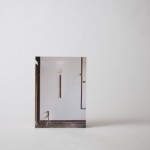February, 2011
Asahikawa day 4
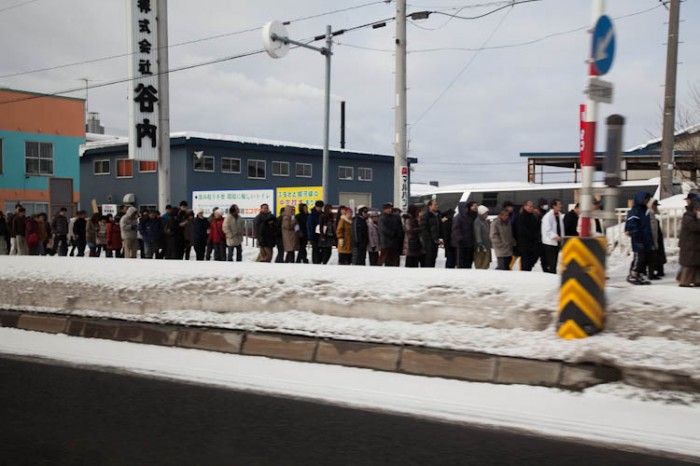
On our last day in Asahikawa we got up nice and early to visit “Man Mountain” Sake Brewery. It is only open to the public on one day a year, and it almost seemed like fate that we would be in town for this special day. Unfortunately it seemed as if everyone in Hokkaido had the same idea as us, and the line up was literally down the block.
We decided to skip it, we’ve been drinking so much Man Mountain these past few days I’m not sure if it would be appropriate to be drinking this early.

We thought we were on our way to the airport to drop off Oji-san and Matsuo-san, but were surprised to be making a stop at the Maruichi wood processing facility where the “wrap wrap” is produced. Each wrap wrap is made from the scrap wood from this workshop. I didn’t know if we would come visit or not since the machines are very high tech, and the processes they use to make their products are top secret. It was a thrill to see everything, but we respected their wishes and didn’t take many photographs.

The technical skill here to create these tiny wooden bracelets is just extreme.

This is a cherry wine stopper designed by Rina Ono.

I was very enamored with these pieces so I was estatic when Maruichi san told me they were gifts for us to take home.

Although there are high tech machines, this is still a wood shop with lots of tried and true tools.

There isn’t a really great transition here, but our friends caught their flight back to Tokyo. I still can’t believe they flew out here for us, it was such a pleasure hanging out with them for the past few days. We dropped them off at the Asahikawa airport and headed back into town for a nice warm lunch.
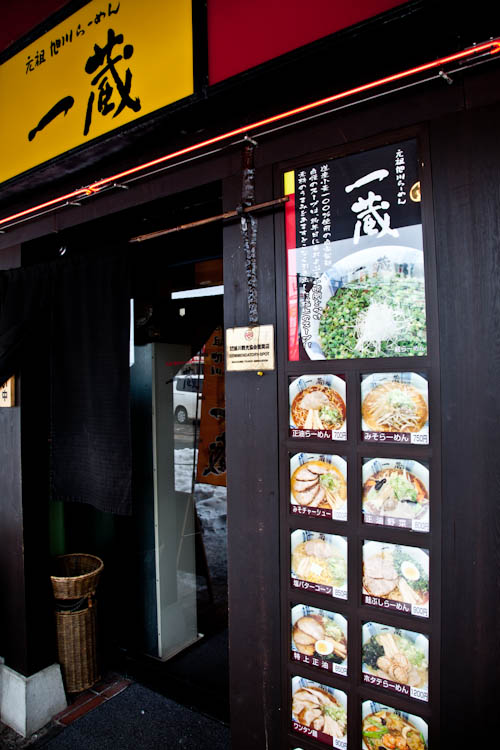
Asahikawa is famous for 2 things, 1 is their woodworking and the other is their ramen. They say Hokkaido ramen is the best in Japan and there is a big rivalry between Asahikawa ramen and Sapporo ramen. Naoto told us he would take us to the best ramen spot in the city, which turned out to be a big building with a bunch of small ramen stalls. He has one he particularly likes and visits every week. We were joined with Naoto’s friend Tai for the rest of the day to build up the entourage once again.
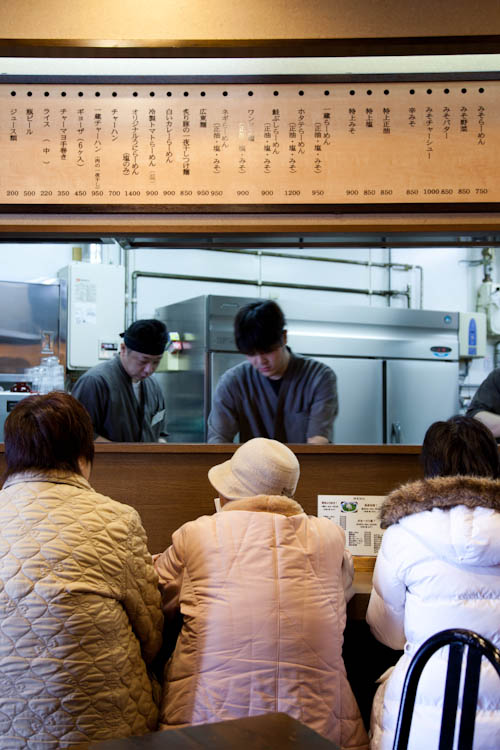
It was old school in here, packed with people of all ages.

We ordered the Asahikawa special miso ramen of course, and it would set the bar ridiculously high for us for the rest of the trip.

Afterward we wanted a coffee but there weren’t too many amenities around so Naoto offered to buy us some BOSS coffee from a vending machine. It was served hot and besides it being a bit too sweet for our taste, it was a pretty good, umm, can of coffee.

Of course feeding a head ache with coffee isn’t a really good idea, and that’s just what happened to Juli. We stopped by a local pharmacy and picked up some aspirin with it’s own endorsement by a young J Pop super star.

We had the whole day free but didn’t want to travel far and wide. Naoto mentioned that the Asahikawa Zoo was a landmark in Japan.

Funny drawings and handmade signs everywhere.

Not sure why all the snowmen have Brooke Shields eyebrows.

Pacing polar bears.

You can enter this little space and pop your head up into the Polar bear exhibit.

Of course you are protected by plexi glass.

We don’t know what this is, but he is ADORABLE! Nearby, were our familiar raccoons in a not so appealing cage, and true to their nature ALL of them were conniving to escape, digging and jumping like a bunch of incarcerated bandits.


Yet another coffee break, with cheese toast!

The Asahikawa train station is under construction. Naturally we love the wood slats.

Apparently they are working with craftspeople to showcase and emphasize all the local talent.

We passed by a side street and noticed what looked to be a design shop (tell tale Caravaggio pendant lights were our beacon of hope). It’s another location of the previously visited Less.

The store carried a beautiful collection of Japanese clothing and Italian leather accessories, as well as a selection of design objects.

Our last night Naoto took us to a restaurant specializing in local Hokkaido ingredients.
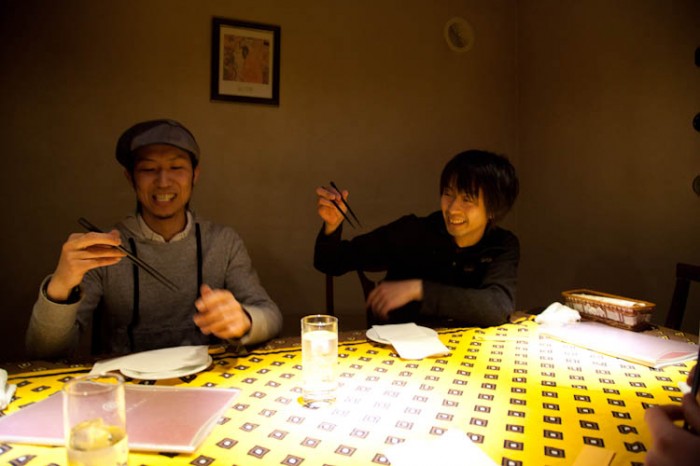
Chopsticks.

Yebisu beer, look at that amazing logo!

Delicious buttery pumpkin soup, a really popular vegetable here in Hokkaido.

Roast chicken breast with all sorts of local mushrooms, tender and tasty.

Naoto, John, Juli & Tai. Sad to say goodbye to our friends.
Off to Otaru for a night at a gorgeous hotel, then some skiing and adventures in Niseko…and more Sapporo. Yes kids, the adventure continues!
Asahikawa day 3 – part 3

Well it’s the end of our 3 part epic day 3 Asahikawa post (there is still one more day!). Looking back at the past 2 posts, I can’t believe what a day we had and the rest of the night would keep the bar just as high. After visiting Professor Oda’s residence we drove back to Asahikawa to visit “Brown Box“, a craft store that specializes in products made by craftspeople from Asahikawa. Some of the products we recognized from earlier in the trip, but most were knew to us and a pleasure to discover.
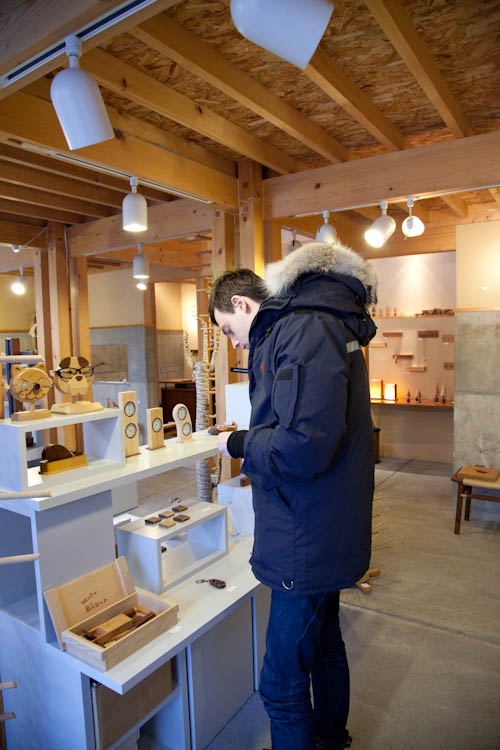
When we arrived at the shop the owner Mr. Tokunaga served us some delicious hot chocolate in “Cara cups”, a linden wood cup designed by Rina Ono and made by Hidetoshi Takahashi (we sell them in the shop).

A collection of designs by Oji Masanori and Rina Ono.

Juli fell in love with this little guy.

A little kee-kee, I wish Isha could hang out with us in our shop.

The last workshop of the day was one we were really looking forward to – Takahashi Kougei.

Takahashi Hidetoshi has been a part of our entourage, but we never really got a chance to speak in depth about his work until we visited the studio.
This studio is where Takahashi san produces wooden tableware, including the Kami and Cara series. I should step back a bit and give you a bit of history… Takahashi Kougei is another family run operation, his father is a master craftsmen still producing his own wooden tableware in the workshop. Takahashi Hidetoshi decided that if he would continue in the family business he would need to modernize wooden tableware and bring the tactile experience of wood to a younger generation.

The first piece he produced himself was the Kami cup.
Although the stand alone piece was very impressive, it just wasn’t selling well. It wasn’t until the collaboration with Oji Masanori and the expansion of the collection that the pieces started to sell.
When I asked Oji san about their relationship he replied that when he visits Takahashi Kougei, he feels as if he has been there all of his life. He instinctively knows where everything is, if Takahashi san asks him to find him a tool Oji can somehow can find it instantaneously.

When we arrived Takahashi san was just finishing a Kami cup. He uses a wheel and chisel to finish the cup to a 2mm thickness.


All of that saw dust is poured into this wood burning stove, and in the summer Takahashi san tells me he delivers the saw dust to a local onsen where they burn the saw dust to heat the water.

The calender on the left seems to make an appearance in every workshop we’ve visited.

An assortment of tools.

The drying process is very regimented.
The rough lumber is purchase and left to dry outside for between 6 – 12 months, depending on what season the wood is purchased.
The rough lumber is then cut and made into these cylinder blocks and then left to dry again up in the rafters.
The solid cylinders are hollowed and then a perfected combination of kiln drying and microwaving ensure the wood will never warp.

A collection of jigs for various wooden vessels.

I asked if it was possible to see if I could see a step by step process on how the Kami cup is made.
He graciously allowed us to film the process, we’re really excited to give you a first hand view of how each cup is made. You can see how painstaking it is being one man making each cup one by one.
I asked him how long the entire process takes from that first piece of milled rough lumber. He said it takes roughly 4 weeks.

This a visual of each step from rough lumber to hand sanded finished product. You might notice there is one step missing from the video, the step is an industry secret and Takahashi san asked us not to share it. Although he did let us witness his ingenious method.

After all of the wooden cups are fully milled and dried, they are taken upstairs where a coating of food safe water mat polyurethane is applied.

They are given time to simply air dry, each coat is followed by hand sanding. Many coats are applied to ensure the cups won’t stain with continue use. I’ve had my Kami mug for over a year and drink coffee from it multiple times a day and it still looks brand new.


Rags for applying the finish.

The pieces are then boxed and shipped to select retailers.
Thank you so much for letting us share with our customers the process of the Kami cup!

After spending a good amount of time at the workshop, Takahashi san grabbed his coat and all of us drove into town for some BBQ. We walked down an anonymous street, following distant lights.

I couldn’t tell you what the restaurant was called or where it was located. It was definitely a local haunt and we could hear the loud chatting of happy eaters from outside.

It was the type of intimidating place that we might have peeked our head in and walked out of. The place was filled with smoke, a wall of it, but in this case it wasn’t cigarette smoke, it was BBQ!

The first floor was roaring so I didn’t think we could get a seat. The waitress took us upstairs to another room where a big table was waiting for us, we took our shoes off and entered the eating area.

We really love sitting in the floor. I wish it was common in Canadian homes.


The waiter dropped two huge charcoal pots in front of us.

And a bunch of beers.

We let the experts order for us.
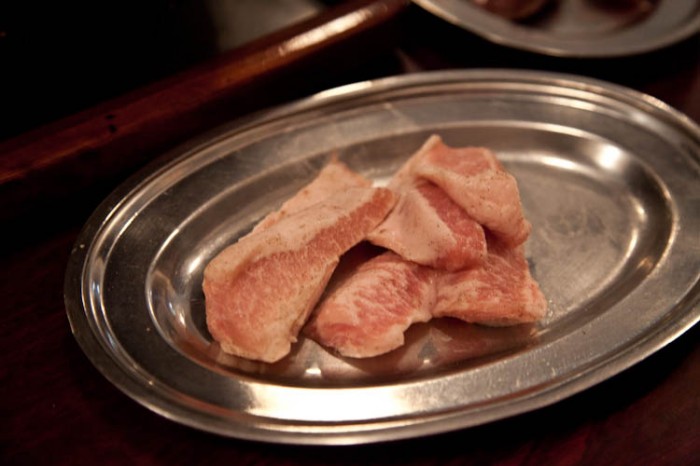

Pork and chicken hearts? Yes please!


It only took a moment for a slew of different meats and veggies to arrive at the table, our favorite was definitely the marbled beef.

Huge raw beams and lanterns hung in the ceiling amongst a ridiculous amount of smoke. Our eyes were watering after 20 minutes and everything I was wearing that night smelt like smoke and then later made everything in my suitcase smell like smoke. (It secretly smelt delicious).

Every night we had to try some more challenging foods, this fat and cartilage filled pork foot was tonight’s special dish. I sprinkled some special spices and salt on it and put it on the grill.

Here goes nothing! In between the bits of cartilage the meat was really delicious, I wasn’t sure if I was supposed to eat all of it or not, I think I probably ate more fat and cartilage than I should have,

What an intense day, it was really unforgettable.

We seem to have a collection of snowman photos now.

Tomorrow is our last day in Asahikawa, better get a good nights rest!
Asahikawa day 3 – part 2
Well, we’re back from Hokkaido, we arrived yesterday at around 3, got home, ordered a pizza, and tried our best to keep the place clean while we unpacked. We still have a lot of posts to do, but Asahikawa was just so epic I think day 3 may need to become a 3 part post. I know that sounds crazy, but we’re home now, and aside from a pile of emails that need tending to, we’ll be able to do the posts a lot more frequently.

There have been a couple of home tours during this trip, but this specific home is quite the departure. We drove up a private driveway to a concrete home in the hills. I didn’t know where we were or who exactly we were meeting but on our schedule it said “lunch with Mr. Oda (tentative)” so I figured if we did manage to snag this meeting, we were very lucky.
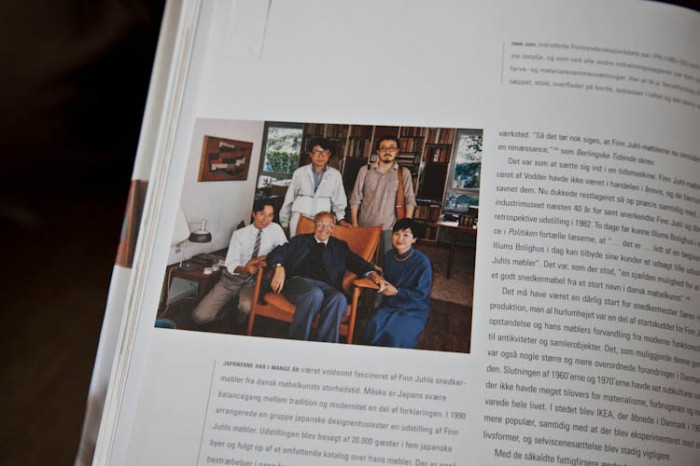
Professor Oda Noritsugu, or Oda-san is very well known in Japan and abroad as a master historian on Scandinavian design, writing many books on the subject and having one the of the most extensive collections of mid-century Scandinavian design in the world. Here is a photo of him (left) kneeling down next to Finn Juhl, a name that will be frequently mentioned during this post.

For instance this sofa.

It is a one of a kind prototype by Finn Juhl. I have never seen it before in my life. It was spectacular in person.

A book by professor Oda, “Hans Wegner 100 chairs“. Professor Oda mentions he owns over one hundred pieces by Hans Wegner alone (over 150 pieces by Finn Juhl).
 ”
”
Professor Oda was generous with his time, he took us on a full tour of his home, opening drawers and sharing his collections of Axel Salto ceramics, tea services, and cutlery. Allowing us to photograph everything along the way.


We saw a glass display case with many prototypes of the Duckling by Hans Bolling, a piece that we sell in our shop.

A Finn Juhl Chieftain chair prototype with brass cup holder.

Only a few were ever produced.
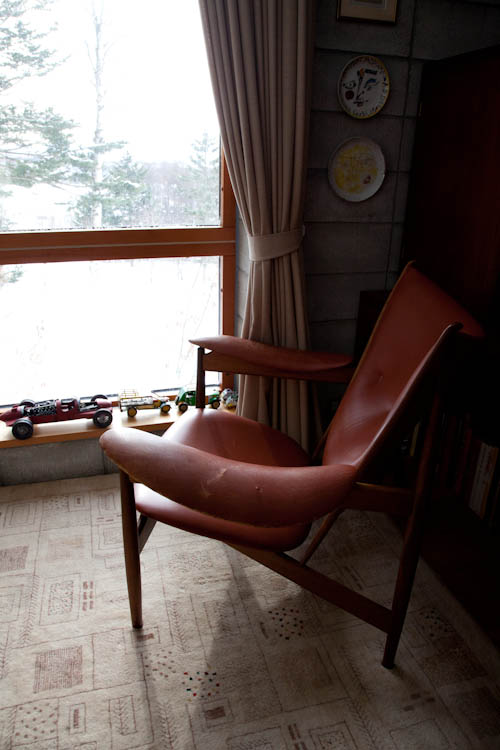
The original Chieftain chair sitting near the window.

Professor Oda took us down a floating staircase to a double height space with large windows. The sofa in the photo is by Borge Mogensen, with a mouth blown art piece behind glass by Tapio Wirkkala.

In the basement there were hundreds of chairs in storage, which he often shares with exhibitions world wide. The exhibition he was working on currently was specifically for Finnish glass. There was a secret study room that he showed us which had a Borge Mogensen shaker sofa, a pile of books, and pages from online auctions of rare pieces Professor Oda was interested in.

We headed back upstairs for some cake.

We all sat around a large Poul Kjaerholm table with PK9 dining chairs.

I took out my iPad to show a couple images of the store.

I got to a photo of our desk showing the Trinidad chair by Nanna Ditzel and Professor Oda grabbed a book and pointed to this chair by Ditzel. It will be back in production fairly soon under the name “Oda chair”, I was stunned to see how strong professor Oda’s influence was. To have a chair named after you is pretty spectacular.


The central fireplace heated the entire room. I could feel the heat just sitting at the PK table.


We shared a very inspirational conversation about the longevity of a well made product. Professor Oda pulled out a scarf and a pair of leather gloves that he has personally owned for over 40 years. He held up his scarf and told me that when he was younger he purchased this wool scarf that was well beyond his salary, it took him a very long time to be able to afford it, but he purchased it with the intention of having it for at least 25 years. That he said is the magic number, if you can’t pick a product up and say confidently that this product will serve you well for a minimum of 25 years, it is not a good purchase. Needless to say the scarf is well over 40 years old, and he continues to enjoy it today.
He mentioned that a lot of design today is design for the sake of design, for the sake to make money, to make trendy and unnecessary products. A company will approach a designer and say “make this for us at this price point” instead of allowing the designer to have the freedom of design and freedom to use good quality materials. It is up to the customer to protest against this disposable design, ask for better quality and say I want good design, not design for the sake of design.
It was a very inspirational talk, and it made us fee so good about what we are trying to do with the store.


The bedroom.

There were a few Finn Juhl 45 lounge chairs around from different time periods, it was interesting the see how the shape subtly changed from the prototype to the manufactured version. He also own a 45 chair with a solid wenge frame, a one of a kind piece that was just gorgeous in person. Our photos didn’t do it justice.
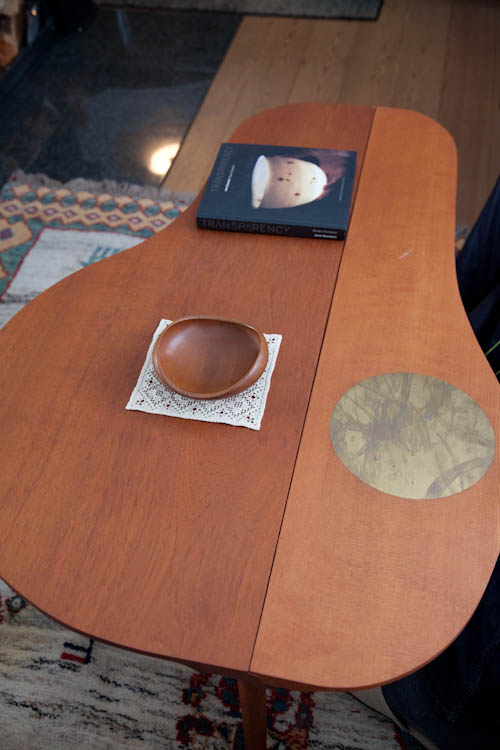
A very rare pear shaped folding coffee table by Finn Juhl.

Royal Copenhagen in the entrance.

Me with Professor Oda, what an honour. Thank you again for showing us around your home, it was a real pleasure.
Asahikawa day 3 – part 1

Our third day is Asahikawa was a really special one. We got to visit two amazing work shops so I thought we would do two separate posts so we can highlight them equally. Our first stop of the day is the Tanno studio, where our business card holders are handmade. The studio is a family run operation with both father and son carving out their unique paths in the world of precision woodworking.
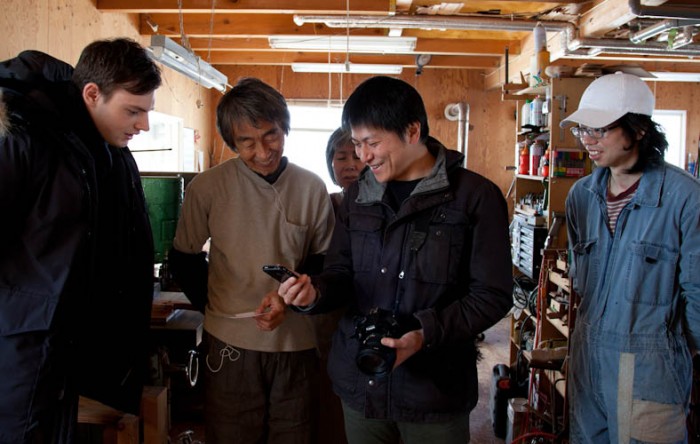
Let me introduce the designers: the gentleman on the left is craftsman Norio Tanno, and the far right is his son craftsman Masakage Tanno, the designer of our business card case.
Above is a photo of Oji san showing some photos of our store on his iPhone.

We entered their home through sliding doors and took our shoes off, to the left was the work shop and the home just up the stairs. A beautiful light filled space with plywood walls and a central wood burning fireplace.




Flowers were drying from the ceiling of their office.

A beautiful antique cabinet.

In the dining room there was a large dining table with a row of shelves against the wall, chronicling the work of both Masakage and Tanio.

A set of storage boxes with embedded magnets.

Masakage Tanno in his work uniform.

A stunning rosewood tea container with folding tea scoop by Norio Tanno.

We fell in love with this cool storage box with little drawers that need to be opened in a certain pattern to unlock the larger doors – this was made by yet another wood worker.

A newly designed–and award winning—business card case, coming soon to Mjolk!

A little wooden Dala horse from a trip to Scandinavia, maybe from Gotland?
Norio Tanno mentioned he was recently there. Sitting down with Norio Tanno he was very intrigued to hear why we chose to open a Scandinavian inspired store. We answered with a long drawn out rationality about how Canadians can easily connect with the Scandinavian sensibility because the landscape and climate are very similar, and that when you eliminate unnecessary details in design you create a longer lasting and timeless product, etc.
We should have posed the same question to him!


A set of wooden scoops by Masanao Nakanishi who is currently serving an apprenticeship at the Tanno studio. In Asahikawa he works under the name Bjorn (Swedish for bear) and will be opening his own workshop in the near future. We look forward to getting our hands on one of those scoops!
Off to the work shop!
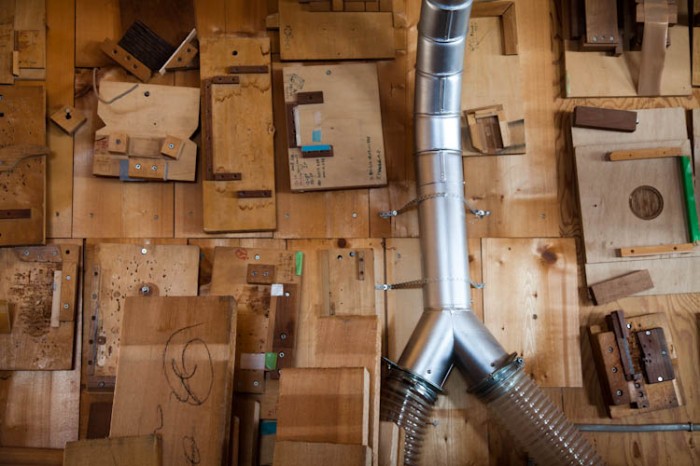
A collection of jigs hang on the wall.

Nearly finished business card cases, it was fascinating to hear the process. Since the stability of the wood is so necessary to create a long lasting product we found out that after each time the wood is cut, they set the piece aside and let it rest to stabilize.


A piece of local Hokkaido birch, Masakage Tanno tells me it’s a material he would like to work with in the future. He tries to use as much local materials as possible in his production, but it’s getting harder. Simply put, the cost to mill lumber is really high, but due to the fading economy the cost of milled lumber is at an all time low. It’s become cheaper to import wood than to mill it locally in Asahikawa. Masakage Tanno pointed to a stack of fireplace logs saying that sometimes if he finds a beautiful piece of wood he will mill it himself, but the drying process takes a lot of time.


I am intrigued by all of these little wooden pieces. Norio Tanno tells me that he cuts these pieces from a single piece so that the grains all match up.

You can see the two pieces being placed quite far apart, and it’s only when you look very closely that you can align the wood grain. For Tanno it’s more about personally knowing the piece is in harmony with itself.

These exact tea containers will be available through Mjolk shortly.

The matriarch of the family runs the business side of the Tanno studio, it really is a family business.

Good bye! Thanks for the hospitality!


We left the Tanno workshop to grab some lunch at Kitanosumai Sekkeisha (Northern House Planning) a collection of buildings which was once a school converted by architects and made into a shop, furniture showroom, cafe, and offices. The site is in the mountains quite a distance away from Asahikawa but it is worth the long trek, the destination has everything and visiting is quite satisfying. The food was great and we even purchased a few items from the gift shop.

Northern house planning refers to the architects who reside here, they specialize is Nordic inspired buildings. The cafe was very Scandinavian and we sat at a big birch table.
We loved this wooden utensil rest.

I ordered the onion soup, which was delicious.
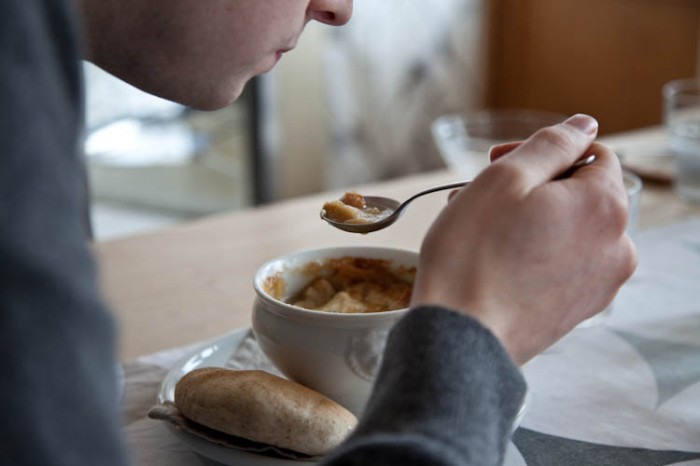

Juli ordered the pizza. We found out later that the chef specializes in Italian food. Over lunch we talked about how a lot of tourists don’t really grasp how good Western food is in Japan. Taku, Naoto, and Masanori are all from the generation that was introduced to Western food at around 8 – 10 years old. Taku reminisced about the first time he ate a bun from KFC and how he thought it was the most magical thing in the world. The one thing they all shared in experience was eating a McDonald’s burger for the first time and being really grossed out by the flavor of pickles!
I pointed out the collection of pickle preserves on the shelf for sale, I guess tastes have come a long way.

The restaurant smelled so delicious because there was a bakery directly underneath us. Naoto grabbed some treats to take as a gift to our next host, who’s beautiful home you will see in Asahikawa day 3, part 2….
Asahikawa day 2

We woke up the next day to a beautiful morning. We had some surprisingly good hotel breakfast and everyone gathered in the lobby to wait for Naoto to come pick us up in his van. Where were we traveling to?

We thought we would start the morning right with some SAKE! But not just any sake, special igloo sake!
One of the shop keepers at the brewery met us out front (I think someone called ahead to make this appointment, because in the car we weren’t sure if we would be able to see the igloo or not.)
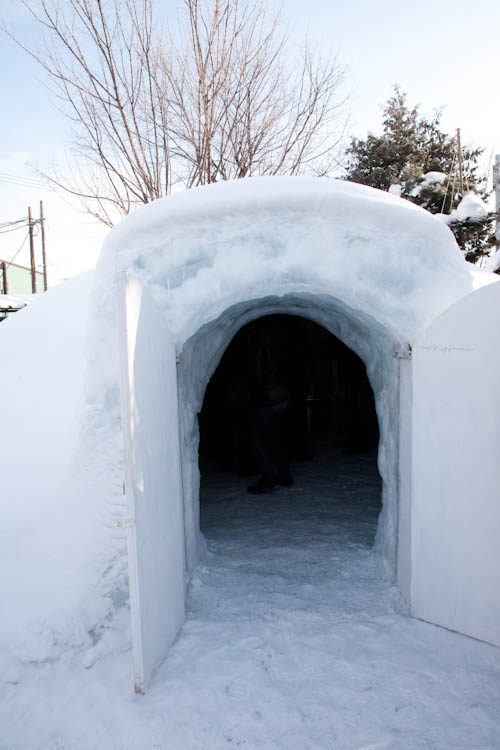
They create this little snow cave by inflating a large balloon and when the temperature hits a certain low, they pour water on it, over and over again until they build up a thick layer before deflating the balloon.

Inside is a grass roots version of a sake brewing. The sacks are filled with fermenting rice which liquidates and then drop by drop, drips into that little stainless pot. No filter, completely unpasteurized ice sake!

Samples? Yes Please!

Bottoms up! It was really delicious we bought a tiny bottle to take home with us.
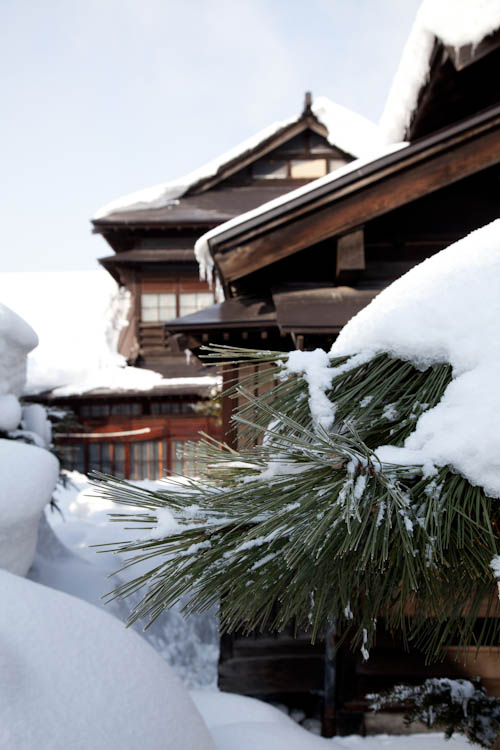
The old brewery was really beautiful on the outside.

Vintage sake ads.

A collection of old Japanese water buckets. The vintage Jens Quistgaard ice bucket I have was inspired by these shapes.

After the sake tasting we headed over to Iba Takahito’s house.

Iba Takahito’s work is a pure form of wood working. He uses techniques from the Showa period and produces all his work by hand at his farm house just outside Asahikawa. Not only is he a young designer working with traditional methods, he is also known for using traditional Japanese lacquer in his work.

We were invited into his beautiful farmhouse where he and his wife live.
The fire place is the heart of the home, here in Asahkawa.

Cat shelf!

This beautiful handmade shelf, designed for one purpose–holding these glasses–was very poetic.

Hand bound brushes.




Not only did the couple let us bombard their home with a mob of people, they even served us tea. We appreciate the hospitality so much.

Oji Masanori talking shop.

Next Iba Takahito offered to show us his workshop.

This is where Iba Takahito mixes his lacquer.

A wall of chisels and planers.

Iba san showing us his traditional wood planer.


We decided to grab some lunch at “Gosh“, a really popular lunch spot. Oji Masanori attempted to visit here on his last trip to Asahikawa but because the restaurant doesn’t take any reservations, the place was packed and he couldn’t get a table.
We had a lot more luck this time.

Juli had the tuna melt.

I (and nearly everyone else) had the beef stew. It was delicious.

Dueling cameras.

After touring about Furano town and checking out the scenery we headed for our next meal (we have been eating A LOT).

Furano Burger, a little burger house in the middle of nowhere. I read about this place in my D&Department guide and was instantly charmed by it, their farm produced burgers and sausages are well worth the long drive from Asahikawa.

The inside has a simple pine interior, we ordered a couple of beers while we waited for our food. We weren’t too hungry when we arrived but after sitting for a couple of minutes and smelling the grill, we were anticipating our burgers.

There was a little glass fridge display where you could purchase their farm sausages or bacon.



Our burger arrives with bacon, cheese, fried Hokkkaido potatoes, and a side sausage. It was amazing, it sets a whole new standard for eating burgers in Japan.


We were invited to Sato san’s home near Furano, a beautiful property on the mountains surrounded by wilderness. I’m told they get a lot of bears and deer around here. Mr. Sato is a distributor of fine Japanese products, he says there are three types of real design.
1 – Single produced art pieces that are displayed in art galleries.
2 – Mass produced designs that are found in many shops.
3 – Artisan designs that can be produced in small batches and sold to specialty design stores.
He fits the latter, and he has a beautiful collection to prove it. Everything from antique Japanese lacquer ware to contemporary technical wood working craft, it was a real treat to see everything and Mr. Sato graciously let me touch everything.


Oji san testing out the snow blower, he started getting adventurous and blasted everyone with snow.

Now, time for revenge!

In Hokkaido it is a tradition to build ice huts to sit in and cook rice cakes. Mr. Sato piled up snow and created the interior with a chainsaw.

The rice cakes were cooked over an open flame and then wrapped in seaweed and dipped in soy sauce.
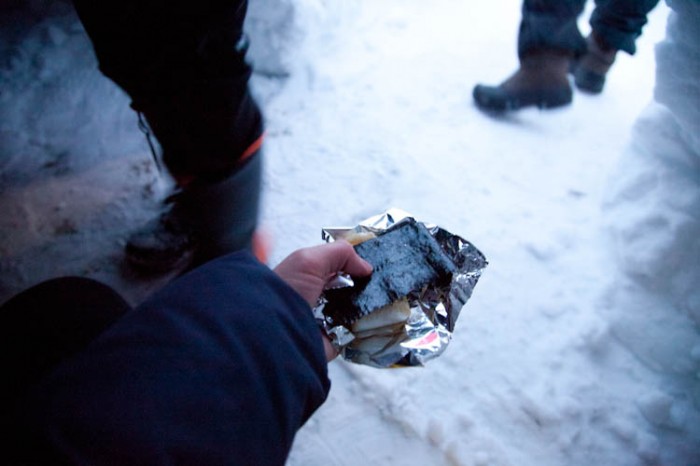
It was very tasty, and such a treat to hang out in an igloo!


Goodnight!
Asahikawa day 1

We arrived at the Asahikawa train station after an hour long express train ride from Sapporo. We were greeted by Naoto Yoshida, the creator of To-mo-ni and the ingenious wrap-wrap which we carry in our store, and his friend Steve King, a Brit turned Asahikawan. We stopped by one of Naoto’s favorite lunch spots – Casa el nino.
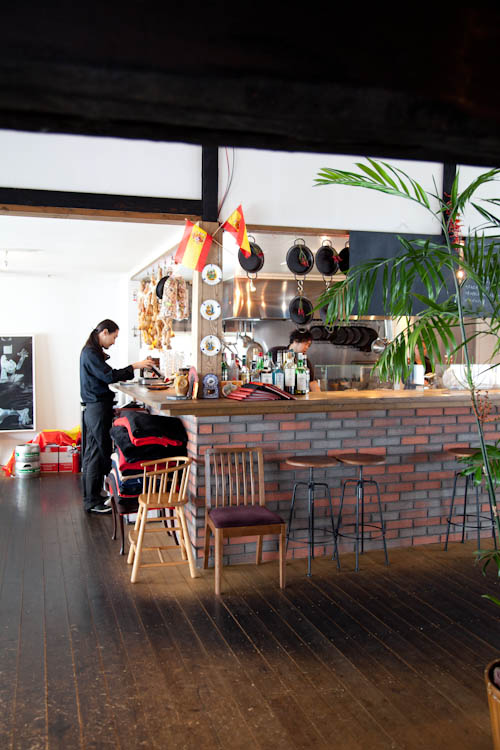
The lunch spot is a local haunt with Spanish inspired dishes made from local ingredients.

The first course was a nice hot vegetable soup made from local Hokkaido vegetables.

Next was a pickled herring with potato and shrimp cocktail.

This fish soup dish was particularly deslicious. I thought it had to be the main course.

And then they brought out the paella, one with seafood, and one with chicken.
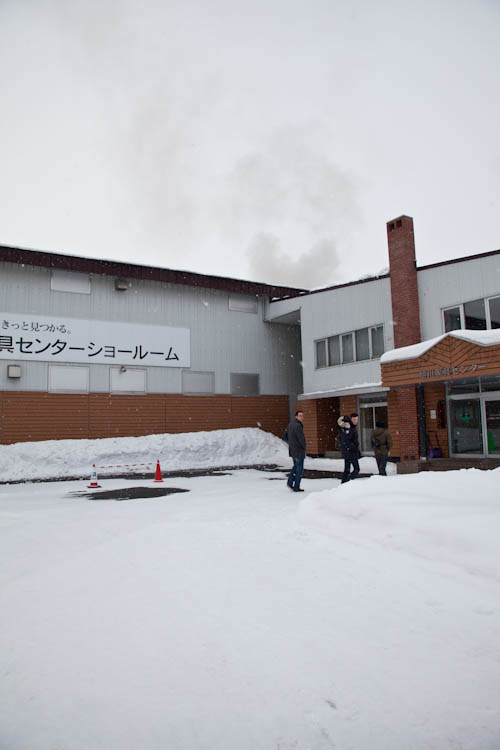
After we filled our stomachs we went to the Asahikawa Furniture Center. A must see for anyone who’s making a trip to Asahikawa, as the town is a furniture making town and this multi-level showroom is dedicated to mostly local work.

Naoto took us to the CREER booth which is designed by and made by his father, craftsman Yukio Yoshida. Winner of the technical prize for wood working in Japan, and 3rd internationally.

A beautiful sculpted walnut floor lamp.

The more you look at beautifully crafted furniture, the more you become desensitized to it. After only a few minutes it was sensory overload and it got hard to pick out the really special pieces.
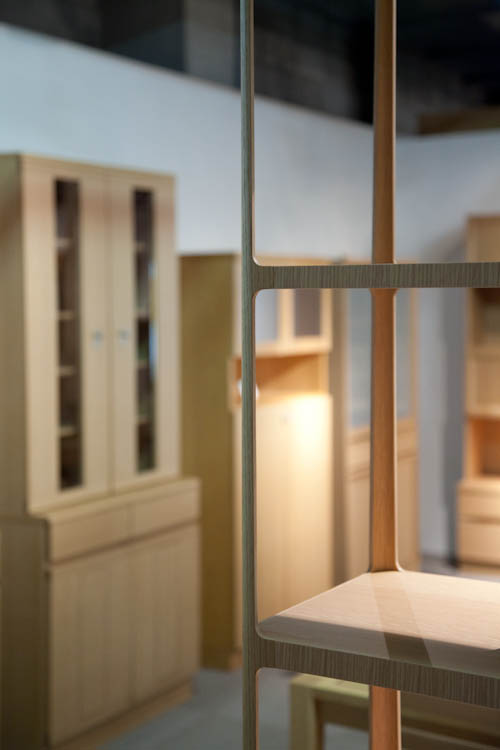
We really loved this thin wooden shelf, which is a recent award winner.

This wooden sink was beautifully executed.

Beautiful lacquered stools by Iba Takahito, whom we’ll be lucky enough to visit with the next day.

Many of the pieces here feature beautiful wooden joints.


We stopped by the To-mo-ni/CREER office to meet Naoto’s father and visit the connected workshop.

Japanese tea was served.
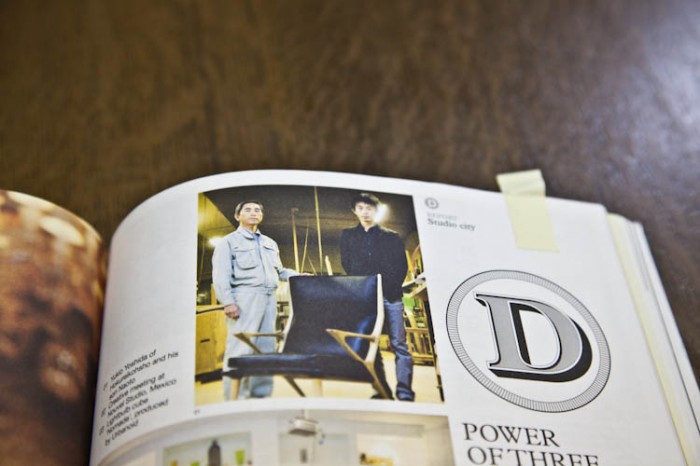
This is an article of the two of them in Monocle magazine. They had a large shelf on the wall with every copy.

This is a photo of a chair Yukio Yoshida made using Japanese Bog Wood, an extremely rare wood that is between 5000 – 8000 years old.

You can see the wrap wraps in the top right hand corner of the photo. Naoto tells us that the inspiration of the wrap wrap came after buying an expensive pair of earphones. The cord was too long and was a bit of a nuisance so Naoto decided to design his own cord organizer using scrap wood from a local wood working shop. Now he loves seeing young hip Tokyo kids using the wrap wrap, he says it’s a good way of getting a material like wood into their lives.
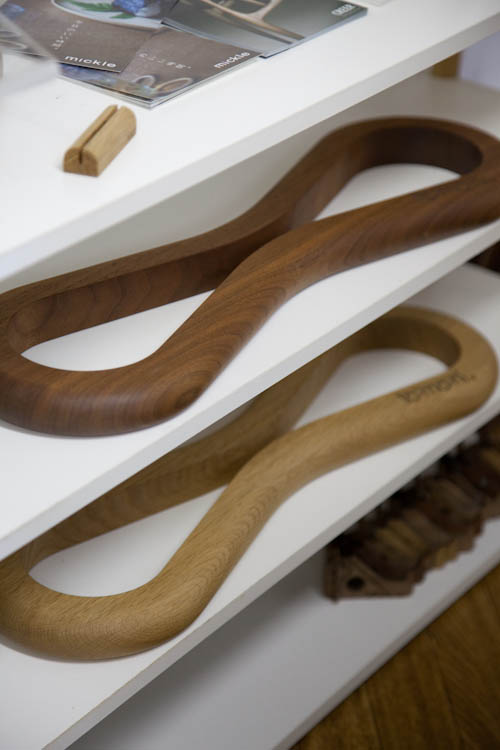
An extremely large promotional sample of the wrap wrap.

After tea Yukio-San offered to take us on a tour of his workshop.

This is where all of the CREER products are made, and they also have a custom furniture and repair service.


These are rough sawed pieces of walnut for the CREER lounge chair, each piece is hand planed and sanded to perfection. It’s amazing to see that these processes still exist in a world so filled with computer aided furniture.

Marking where the tiny teeth joints will be.


Daruma glue bottle.

The metal and wood tool on the table is used to plane each piece of wood. What a great work shop, thank you for the tour and letting us take so many photos!

After the workshop tour we had a little bit of time to check out a couple local design shops. The first is:
4-24 11-5 Toyooka, Asahikawa Hokkaido Japan

In the front of the shop they had various new and vintage products from Scandinavia.
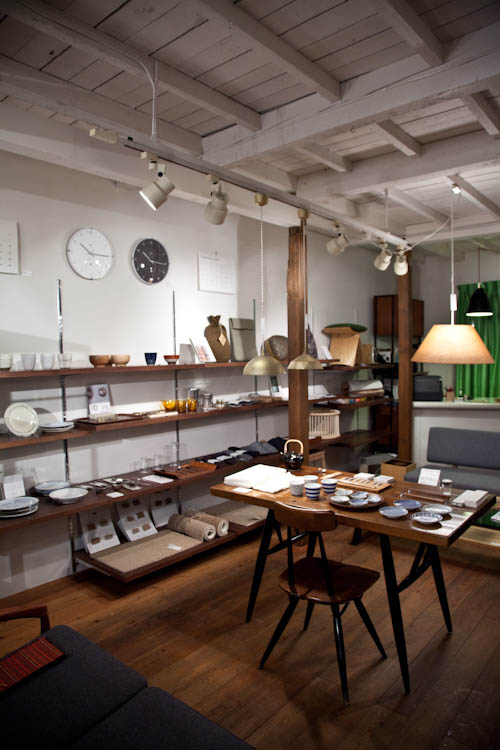
They also stock a beautiful collection of Japanese products, a must visit store in Asahikawa.

The last shop we visited was HOMES which was conveniently located a block away from our hotel. HOMES stocks a wonderful collection of local Japanese crafts, needless to say I picked up a few pieces here. I can’t wait to share them at the end of the trip!

Downtown Asahikawa features a nice walking street lined with beautifully intricate ice sculptures, most of which strangely feature large topless women for some reason.

We headed off to Machi ya for some local Izakaya awesomeness.

The menu was hard to read even for Steven who can read Kanji.

Sake!

In Japan, you need to serve food with alcohol. I thought this looked like some nice dried fruit, maybe a prune in a white sauce or something so I just popped it in my mouth.
Turns out it was raw chicken, and it tastes as you would think. Actually I think it wasn’t the taste as much as the texture that was the problem. I must say that the chicken prepared in this type of restaurant is very fresh, and therefore totally fine to eat, it’s just hard to get past the raw chicken. Anthony Bourdain, we couldn’t do it.

The rest of the appetizers were delicious. A simple mashed garlic potato ball with seaweed and salmon roe.

Tasty fried chicken.

Bocconcini with sweet cherry tomatoes.

Sesame pork with mustard.

At this point the rest of our posse arrived, here is a picture of Taku Matsuo and Masanori Oji.
They flew all the way from Tokyo to come visit us! Masanori is fishing in his bag for a couple of wedding gifts for us.

SNAKE!

One of the gifts was a crazy Origami snake that folds into a small paper cube.

The rest of the meal continued without a hitch until the next dish.

I guess the equivalent to the practical joke in Japan is tricking Westerners into eating raw fish testicles. I should have known!

The tempura version was actually pretty good.

Man Mountain sake!

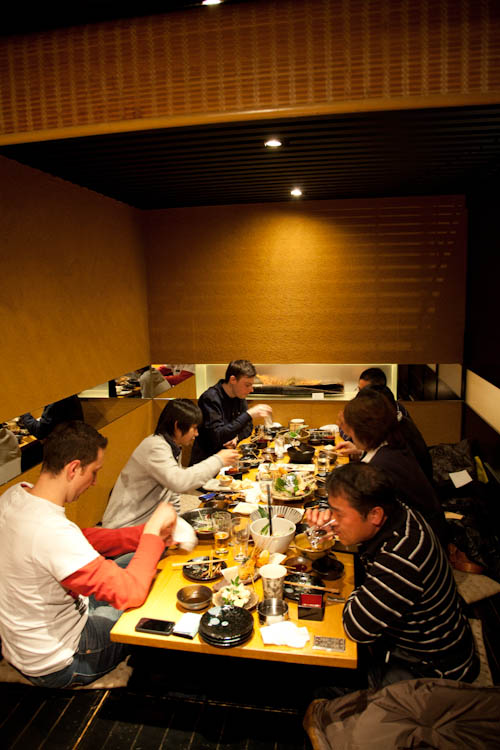

So full. Oishi!



This is a pretty amazing entourage, and most of these guys will be with us the rest of the time we are in Asahikawa.
L-R: Juli, John, Yoshida-san, Matsuo-san, Steve, Oji-san, Takahashi-san

